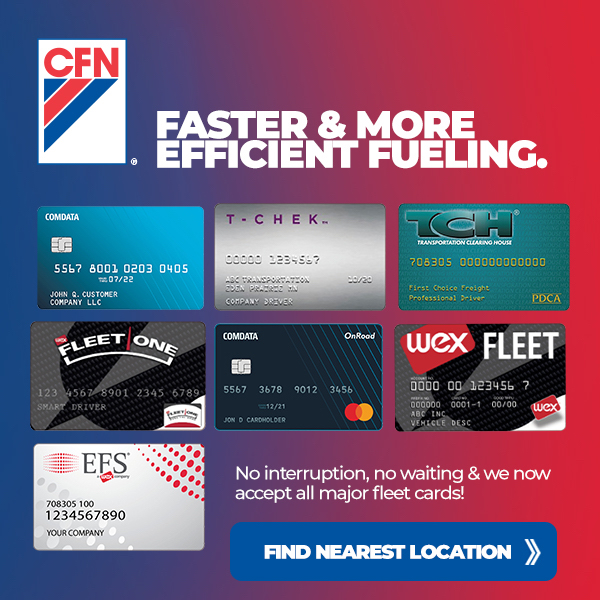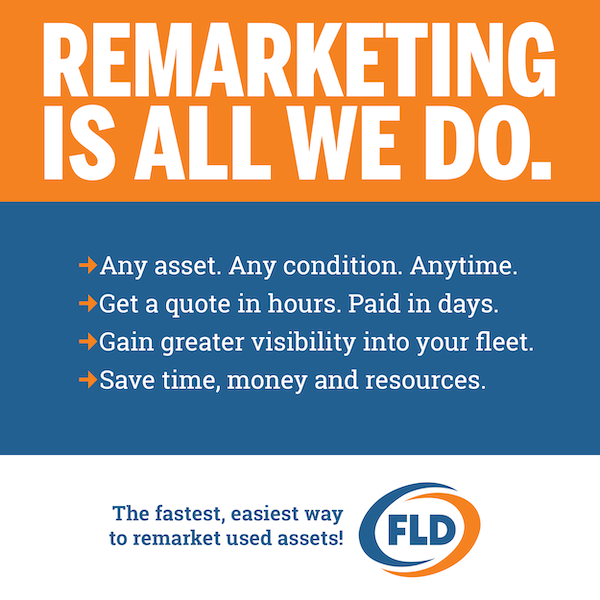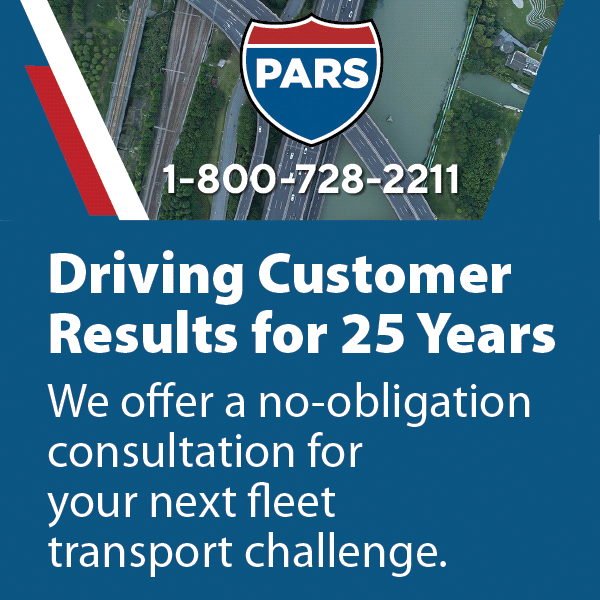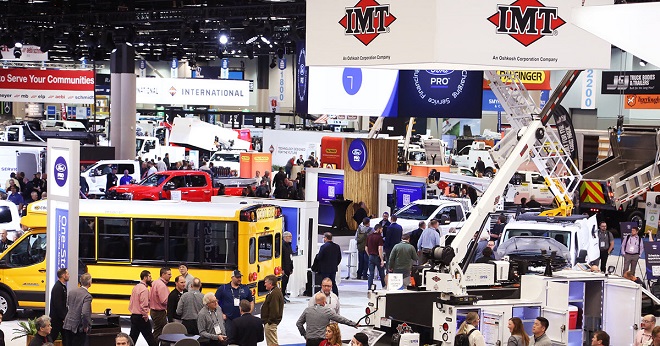
By Tod Trousdell, Fleet Marketing Consultant
March 28, 2023
It’s hard to believe that not long ago, electric vehicles (EVs) were once considered a novelty act. With that in mind, last year’s Work Truck Week served as a coming-out party for all things electric, with virtually every exhibitor looking for ways to tie their vehicles, products and services to the exploding phenomenon.
Flash forward to 2023 and this year’s Work Truck Week. While still heavily focused on EVs and electrification, there was a noticeable difference in how attendees were approaching the subject.
While last year’s post-pandemic fervor seemingly had show-goers granting EVs a “free pass” in terms of scrutiny, this year’s attendees were looking for cold, hard facts as reality seems to have set in that the road to electrification will be long, winding and full of potholes.
With most OEMs touting electric fleets as the cornerstone of their aggressive ESG initiatives, lingering questions abound, mostly concerning range, charging infrastructure and cost. Fleet managers seemed in little mood to accept “fuzzy” or gray answers about EVs or electrification, especially with their corporate overlords looking to replace – in some cases – as much as 30% of their internal combustion vehicles with EVs as soon as 2030.
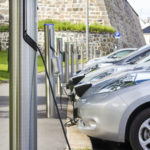 It’s the kind of talk that sends shivers up the spines of the fleet managers who are charged with turning EV corporate pipe dreams into reality, something that can be hard to do with so many unanswered questions. For instance, when will EVs be widely available? What will they really cost? And – in the case of large trucks – when can they actually get their hands on one?
It’s the kind of talk that sends shivers up the spines of the fleet managers who are charged with turning EV corporate pipe dreams into reality, something that can be hard to do with so many unanswered questions. For instance, when will EVs be widely available? What will they really cost? And – in the case of large trucks – when can they actually get their hands on one?
“There are just a lot of unknowns [around EVs] and at this stage of the game, it’s hard to be confident that they can do everything we need them to do,” said Joe Lukacs, Global Director of Fleet Operations for the Sherwin Williams Company. “I think most smart fleet managers – depending on their needs – need more range and more answers around charging, vehicle delivery and pricing before we can make informed decisions that are going to end up having a big impact on our fleets.”
Echoing Lukacs sentiments, David Hayward, Sr. Manager of Fleet Operations for ABM, is concerned about the realities of deploying electric vehicles. And while he is committed to the prospects of doing so, he wouldn’t be doing his job unless he took the time to truly understand the ramifications of electrification. “To be sure, there is a lot of excitement around EVs,” said Hayward, a recognized thought leader among his fleet manager peers. “But excitement doesn’t always translate to viability, and that’s why it’s so important to take the time to vet the possibilities.” Hayward added that he would need to see more progress before he was ready to commit to wholesale EV integration.
On a positive note, Hayward, as well as most of the fleet managers we spoke with, saw NTEA as a unique opportunity to accomplish so many important tasks in a few short, meaningful days. “There’s really no other conference or event where I can get so much done,” said Hayward. “I think I had 10 meetings pretty much every day.”
Fleet managers weren’t the only attendees seemingly thrilled to be attending this year’s show, as attendance returned to pre-pandemic levels, possibly a first for any of the fleet industry shows.
According to NTEA, 14,885 people packed the 2023 show floor and, additionally, this year’s Green Truck Summit completely sold out with close to 1,000 attendees. Booth space for the show also sold out months ago. And while long-time exhibitors were looking to increase the size of their booths, many had to make do with what they had. This took Bill Bishop, SVP of Sales and Marketing for FLD Remarketing, an attendee of the show for 20-plus years, by surprise.
 “This has traditionally been a solid show for us, so we would have loved to have had more space,” said Bishop, whose company debuted its larger-than-life mascot ‘FLD Frank‘, who confidently strode the show floor, greeting attendees and exhibitors. Bishop said FLD’s message of ‘remarketing without risk’ had resonated with fleet managers frustrated by recent industry consolidation and disruption. FMCs were also out in force during the 3-day event, which is held every March in the Indianapolis Convention Center.
“This has traditionally been a solid show for us, so we would have loved to have had more space,” said Bishop, whose company debuted its larger-than-life mascot ‘FLD Frank‘, who confidently strode the show floor, greeting attendees and exhibitors. Bishop said FLD’s message of ‘remarketing without risk’ had resonated with fleet managers frustrated by recent industry consolidation and disruption. FMCs were also out in force during the 3-day event, which is held every March in the Indianapolis Convention Center.
Jenny Sablowski, SVP Truck & Equipment Leasing & Services for the newly formed Wheels, said the week’s festivities provided the perfect coming-out party for her company, which had just formalized its merger with Donlen and LeasePlan just prior to the event. “NTEA was an exciting time for us to come together as one company,” said Sablowski. “Our community of truck experts certainly valued the conversations we were able to have with clients, vendors and suppliers, and are looking forward to bringing flexible financing solutions that work for truck and equipment fleets.”
In addition to Wheels, associates of most of the big fleet management companies were also either exhibiting or in attendance at the show, keen to demonstrate their EV prowess and revel in the post-pandemic atmosphere. In fact, Holman erected a massive booth highlighting its far ranging capabilities. Many of the exhibitors also threw expansive parties, with Knapheide’s 175th anniversary featuring a live performance by superstar singer Kenny Chesney and the JB Poindexter crew rolling out 80s rockers Molly Hatchett for an enthusiastic crowd.
Upfitter Ranger Design was one of the many allied service providers anxious to flex its EV muscles. Teaming with Kingbee Van Rentals, Ranger positioned a futuristic Canoo electric vehicle, in addition to a Ford E Transit, in its sizable new booth. Along with the super cool Canoo, Ranger also featured first to market EV products like its no drill “E” floor, which is safer for install technicians, as well as new, lighter weight shelving and an ergonomically superior partition. According to Ranger EVP of Business Development Peter Young, the new booth was designed to not only showcase Ranger’s over-arching offering, but also show that the innovative upfitter is ready to help their varied customer base succeed, whether a one-man tradesperson served by the distributor network, a large fleet, or OEM clients who are early adopters in the EV world.
“We’ve always been a little ahead of our time and very focused on helping customers maximize payload and increase range since the inception of Ranger Design,” said Young, also the Director of Strategy for the AFLA board. “We are working diligently with our fleet clients and our product advisory council to ensure the EV solutions we design will be deployed successfully in what likely is a once-in-a-generation opportunity to redefine the market.”
One of the busier attendees at this year’s show was Kingbee CEO Scott Haslam, whose company has over 2500 work ready vans for rent on a short term, monthly basis — an attractive option to fleets struggling with lingering post-pandemic vehicle shortages. According to Haslam, many of the fleet managers he spoke with are finding it hard to find work vans at a time when manufacturers are simply unable to provide the vehicles that fleets need to function.
“From what we’re hearing, many fleet managers are getting anywhere from thirty to seventy percent fewer vehicles than ordered,” said Haslam, who brought a team of colleagues to NTEA in an effort to better understand the challenges fleets are facing around vehicle availability. “It’s not like these companies are simply going to stop making deliveries or service calls, so they need flexible, and in many cases, short-term leasing options and that’s where we can help.”
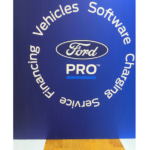 For their part, EV manufacturers, as well as traditional OEM’s, attended in force, with eight new EV launches conducted during the show. Like last year, the event included a virtual sea of upstart manufacturers – many without a working product. Mainstream OEMs like Mercedes, Isuzu and GM were also in attendance. Further, Ford featured a very large Ford Pro booth, complete with a multi-ring extravaganza, including multiple presentations going on simultaneously.
For their part, EV manufacturers, as well as traditional OEM’s, attended in force, with eight new EV launches conducted during the show. Like last year, the event included a virtual sea of upstart manufacturers – many without a working product. Mainstream OEMs like Mercedes, Isuzu and GM were also in attendance. Further, Ford featured a very large Ford Pro booth, complete with a multi-ring extravaganza, including multiple presentations going on simultaneously.
While attendee enthusiasm for EVs was high for the most part, several other alternative fuel options, like hybrids and propane, seemed to have strong showings, as well. In fact, several fleet managers we spoke with admitted that the numerous roadblocks around EV integration had forced them to consider these other options. That was something the team at Rousch Clean Tech noticed as its booth stayed busy with inquiries throughout the show.
“We certainly see from the show floor that EVs are having a moment,” said Chelsea Uphaus, Director of Marketing for Rousch Clean Tech. “But there’s also a lot of unanswered questions and the fleet managers we spoke with need viable solutions today, not sometime down the road, and that’s where we can help.”
For their part, the people at NTEA were happy with the outcome of this year’s show and confident in the value it provided for both exhibitors and attendees. “NTEA’s Work Truck Week has evolved into the premier annual event for fleet managers, especially those managing mixed commercial vehicle configurations,” said Steve Carey, NTEA president and CEO. “It provides a showcase for new engineered vehicle solutions, as well as the latest trends in fuel types and government regulations.”
About the Author
 Tod Trousdell is a marketing consultant and owner of RobertsTrousdell Marketing in Atlanta. In addition to working extensively in fleet, Tod has worked for over 30 years in the cable, sports and hospitality industries, specializing in marketing and brand strategy, research, campaign development, messaging and more for companies like Coca Cola, the International Olympic Committee and Wyndham Hotels. He can be reached at [email protected].
Tod Trousdell is a marketing consultant and owner of RobertsTrousdell Marketing in Atlanta. In addition to working extensively in fleet, Tod has worked for over 30 years in the cable, sports and hospitality industries, specializing in marketing and brand strategy, research, campaign development, messaging and more for companies like Coca Cola, the International Olympic Committee and Wyndham Hotels. He can be reached at [email protected].


